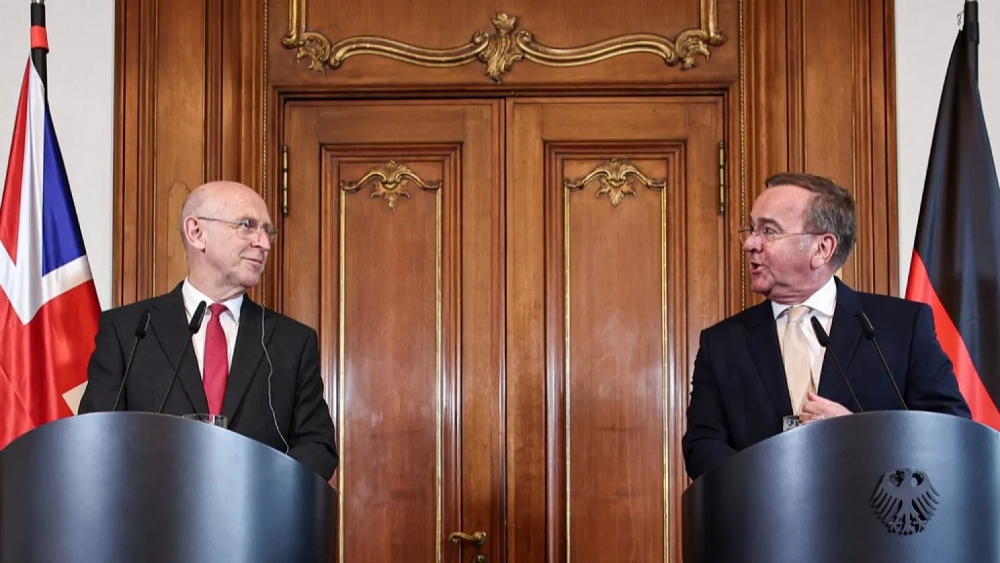
On 15 May, UK and Germany had their first Defence Ministerial Council under the terms of the Trinity House Agreement on defence cooperation, which was signed on 23 October 2024. This first meeting was the occasion to announce progress on several 4lighthouse projects4 that had been set up at Trinity House.
Chief among them is the commitment to the joint development of a new ‘Deep Precision Strike Capability’ with a range exceeding 2,000 km. This project will sit within the European Long range Strike Approach (ELSA) and is understood to be one of as many as 13 different ELSA initiatives, with different leading Countries, that will be revealed over the coming weeks and into June.
At the moment, both the UK and Germany are saying very little about the aims of this new project: they are not even saying if it will be a cruise or ballistic missile, nor is it clear at this stage if it will ground launched or compatible with multiple platforms.
Very little detail is provided about the new agreement on bridging materials but, as we reported earlier, this will see Germany procure an unspecified number of Dry Support Bridge sets from WFEL (a KNDS company) through an amendment of the ongoing British Army procurement of the same system. For the British Army, the Dry Support Bridge, carried on MAN 10x10 trucks, is the new General Support Bridge, procured under Project TYRO to replace the older ABLE system.
Unsurprisingly, the countries also agreed to continuing cooperation on the P-8 POSEIDON maritime patrol aircraft. German crews have flown in 2 occasions on RAF POSEIDONs and it is likely that Germany will continue to rely on British support as it brings its own fleet into service. The joint communiqué is very short of detail, but we assume German crews will train at 42 Squadron in Lossiemouth, the RAF’s Operational Conversion Unit for the type.
British P-8 POSEIDONs will operate from German bases for operations in the Baltic and German P-8 POSEIDONS will have a ‘home away from home’ in Lossiemouth to contribute to surveillance in the North Atlantic. Lossiemouth is de facto the primary NATO hub for this task, with a permanent presence of US Navy personnel and infrastructure to support their own P-8 operations in the area.
As we reported at the time of Trinity House, the UK was also pushing to see Germany adopt the new, in-development STINGRAY Mod 2 torpedo by BAE Systems as main weapon for P-8 and this has now been confirmed with a new agreement signed to jointly develop and procure the new weapon.
Unspecified further initiatives to “develop further connectivity between our Air Forces” have been agreed and compiled in a detailed “Flight Plan”, according to the communiqué.
The countries have “agreed on a strategic partnership in land systems and will continue our close BOXER co-operation”. Circa 100 of the 623 BOXERs on order for the British Army so far are manufactured in Germany and it must also be remembered that the 2 Countries are expected to sign this year, through OCCAR, a joint order for a new Wide Wet Gap Crossing solution (Project TRITON) to succeed to the M3 amphibious rig used by the respective armies within the joint Pioneer Battalion 130, based in Germany.
UK and Germany also cooperate on the new generation of advanced APFSDS round for their tanks (CHALLENGER 3 and LEOPARD 2 respectively). None of these ongoing efforts get a specific mention in the joint communiqué, however.
Another joint project is particularly notable for its (enduring) absence, especially considering it will be possibly the greatest by value, and that is the BOXER RCH155 artillery system, that the British Army desperately needs to replace the AS90s handed to Ukraine.
The UK government has confirmed in recent written answers that negotiations for the purchase continue, but there is concern about slipping timelines. Germany’s own first order, rumoured to be for about 80 of a planned circa 160 systems, was expected to be firmed up by the end of 2024 but no progress is apparent.
The reasons for the delay are not known. There is a possibility UK and Germany, possibly involving Ukraine (which is getting a batch of RCH155s beginning this year) and even Italy (which plans to procure the gun turret, possibly for integration on a different vehicle base) are waiting to see if the program can obtain any support via SAFE loans. The SAFE text has provision for funding to be used for ‘artillery systems’.








.png)
